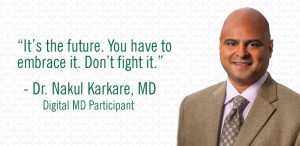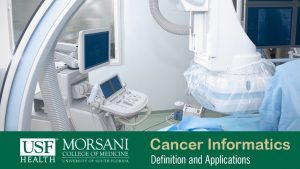Broad adoption of health IT requires that health information be easily and appropriately shared to support numerous uses.
Interoperability, in the arena of healthcare, is used to describe the capability of IT systems and software to communicate, exchange data and allow for a more thorough use and evaluation of medical information.
In short, it means that a patient’s data can be accessed, shared, interpreted and updated by a host of providers from primary care physicians to hospital doctors, lab technicians, pharmacists, and so on.
In the past few years, healthcare interoperability has become a national priority with the creation of the Office of the National Coordinator for Health Information Technology (ONC), which continues to work with private companies, government agencies and healthcare providers to improve the way data is inputted, maintained and shared.
This process involves three levels:
- Foundational interoperability – Facilitates the exchange of healthcare data from one system to another
- Structural interoperability – Ensures a uniform flow of data that does not alter or change the information, allowing it to be interpreted
- Semantic interoperability – Allows the exchanged information to be accessed and used regardless of the operating system.
In some cases, interoperability is achieved through the use of a broker service, which converts the interface between two systems to allow for successful sharing and use.
Standards Development
In February 2009, the HITECH (Health Information Technology for Economic and Clinical Health) Act was signed into law, mandating the creation of a universal system to share health information data. But one critical issue facing that goal is the development and implementation of technical standards, such as standardized healthcare vocabularies, secure email protocols and data encryption and open and accessible interfaces.
Such standards have to anticipate a variety of information exchange scenarios to ensure interoperability. One such resource is the S&I Framework, a collaboration between public and private-sector providers that has worked to develop tools, functions and processes to ensure that all levels of interoperability work. The S&I Framework succeeded in developing implementation guides, information models, vocabulary and value sets, test tools and reference implementation that supports the health information technology community.
HL7 is another data standards initiative from Health Level Seven International, a Standards Developing Organization (SDO) seeking to “improve care delivery, optimize workflow, reduce ambiguity and enhance knowledge transfer among healthcare providers, government agencies, vendors, other SDOs and patients.”
Interoperability Roadmap
In 2014, the ONC presented a 10-year plan to achieve national interoperability by the year 2024. The goal of such a system is to improve patient care, improve the overall quality of health care and to help lower the cost of receiving care.
Such a massive effort, as outlined by the ONC, has encountered issues that continue to impede national implementation. In some cases, the data received is not properly structured or standardized, meaning a recipient system can’t compute the information for timely use. The cost of requiring all healthcare providers in all states to effectively transition to the new system has slowed progress. Confusion about the legality of sharing pertinent yet private data has proved a hindrance. Also, while some participants have found it easy to establish sharing arrangements, not all systems and networks have been successful.
Such challenges have hindered the ONC’s national effort, and many healthcare providers have found the effort distracting and in direct opposition to their core priority, patient care. Some electronic health record companies are working on patient-management systems, according to a report in Healthcare IT News, but those companies alone cannot accomplish the task. Many of those systems only provide a fluid and streamlined data flow within a specific entity, such as a hospital.
In its draft proposal, A Shared Nationwide Interoperability Roadmap, the ONC identified four critical actions that must be initiated. The federal agency called for the establishment of a coordinated government framework for interoperability, the improvement of technical standards along with better guidance for implementing and sharing common clinical data sets, better incentives for providers to share electronic health information, and clarification of privacy and security protocols that allow for true interoperability.
If achieved, the ONC envisions an electronic landscape that allows patients, their families and all health providers the ability to send, receive, find and utilize health data; essentially, a revolutionized system that provides better discussion and more informed decision-making as it relates to each individual patient’s health.




